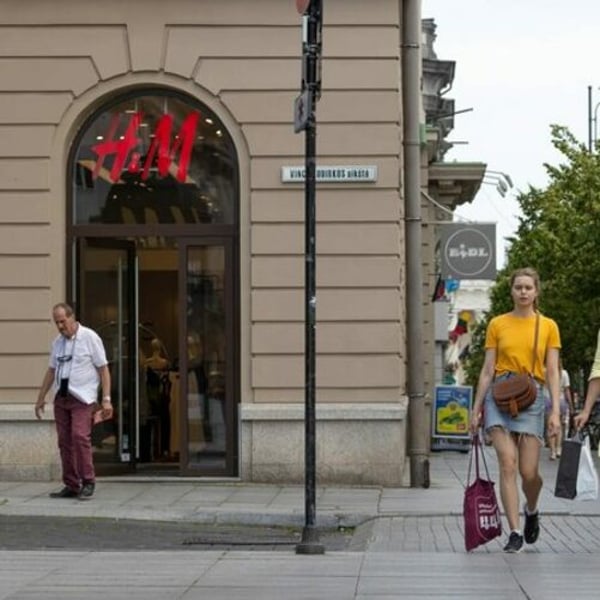By
Bloomberg
Published
June 3, 2025
Fast fashion is responsible for a significant share of the world’s climate pollution and waste. But among the industry’s leading companies, there’s a widening gap between better and worse performers, according to a report card released Tuesday by nonprofit Stand.earth.

Hennes & Mauritz AB leads the scorecard, which ranks 42 fashion companies on their efforts to phase out fossil fuels, while Singapore-based Shein Group Ltd. was one of several companies to receive an F grade.
Sweden’s H&M got the top place for the second time in a row with a B+ overall grade. Shein slightly improved its ranking, coming third from last after being in last place in 2023. Zara’s Spanish parent company, Inditex SA, climbed from 20th place in 2023 to ninth this year.
“We are starting to see more of a division in the fashion sector,” said Todd Paglia, executive director of Stand.earth. “We have this smaller group of companies actually putting money and staff into making this change happen,” he said. “But the majority of fashion companies still aren’t taking enough action.”
Shein, for example, landed in what the report calls the “F club.” Since the last scorecard, its supply chain (or Scope 3) emissions have climbed by more than 170%, according to the analysis. Shein, which is reportedly working toward an IPO in Hong Kong, hasn’t yet released its 2024 sustainability report.
A Shein spokesperson said the company has rolled out several decarbonization projects in the past few years and recently partnered with industry consultants to develop new ways to reduce emissions over the short and long term. As the business grows, however, the company may see emissions increase in parts of its operations as “we implement and scale our reduction strategies,” the spokesperson said.
Shein announced the launch of a €200 million ($228 million) “circularity fund” in the UK and EU last July and committed to investing €50 million in broader ESG efforts. In its 2023 sustainability report, it said it intended to cut its emissions by 25% by 2030 and to achieve net zero by 2050.
Stand.earth developed the Fossil-Free Fashion Scorecard to map companies’ progress in decarbonizing their supply chains. The scoring looks at five categories: commitment and transparency, renewable energy, low-carbon materials, clean shipping, and advocacy.
H&M’s Scope 3 emissions in 2023 were only about half as much as Zara’s or Shein’s. It still has the largest Scope 1 and 2 emissions of the three, but that represents a much smaller fraction of the total.
Henrik Sundberg, H&M’s climate impact lead, said the company is systematic in how it reduces its footprint. “Measuring our emissions accurately and building a clear roadmap to reach those targets — that’s the approach that has worked for us,” he said.
H&M was one of only three brands reviewed by Stand.earth that met rigorous United Nations criteria for net zero target integrity. According to the report, it was one of six that provided financing to suppliers to transition to clean energy, either directly or in the form of a bank loan. The company reported spending about $179 million last year on decarbonization measures.
Inditex received a high score for its climate and energy commitments, as well as its transparency. It was also one of eight brands that raised their Scope 3 emissions targets compared to the previous report. However, Inditex and Shein were among five companies that reported a significant increase in emissions since their baseline year.
“Inditex has set significantly more ambitious climate goals,” said Rachel Kitchin, Stand.earth’s senior corporate climate campaigner. “At the same time, we have noted that the company’s emissions have continued to increase in both transportation and manufacturing.”
Inditex said it couldn’t comment on the report before reviewing it. A company spokesperson said that in 2024, it reduced its Scope 3 emissions by more than 560,000 tons, compared with 2018, “thereby underscoring the importance of collaboration with our supply chain.”
The scorecard criteria have been externally reviewed by independent experts and stakeholder organizations such as Action Speaks Louder and the Changing Markets Foundation, according to Stand.earth. Its research relies on brands volunteering to disclose their emissions data to CDP, a nonprofit that maintains the world’s largest corporate emissions database.
Paglia said that the sustainability gap between fashion brands proves that doing better is possible. “What we are seeing is that you can do it despite the complexity and difficulty,” he said. “There are no excuses left for the companies falling behind.”






